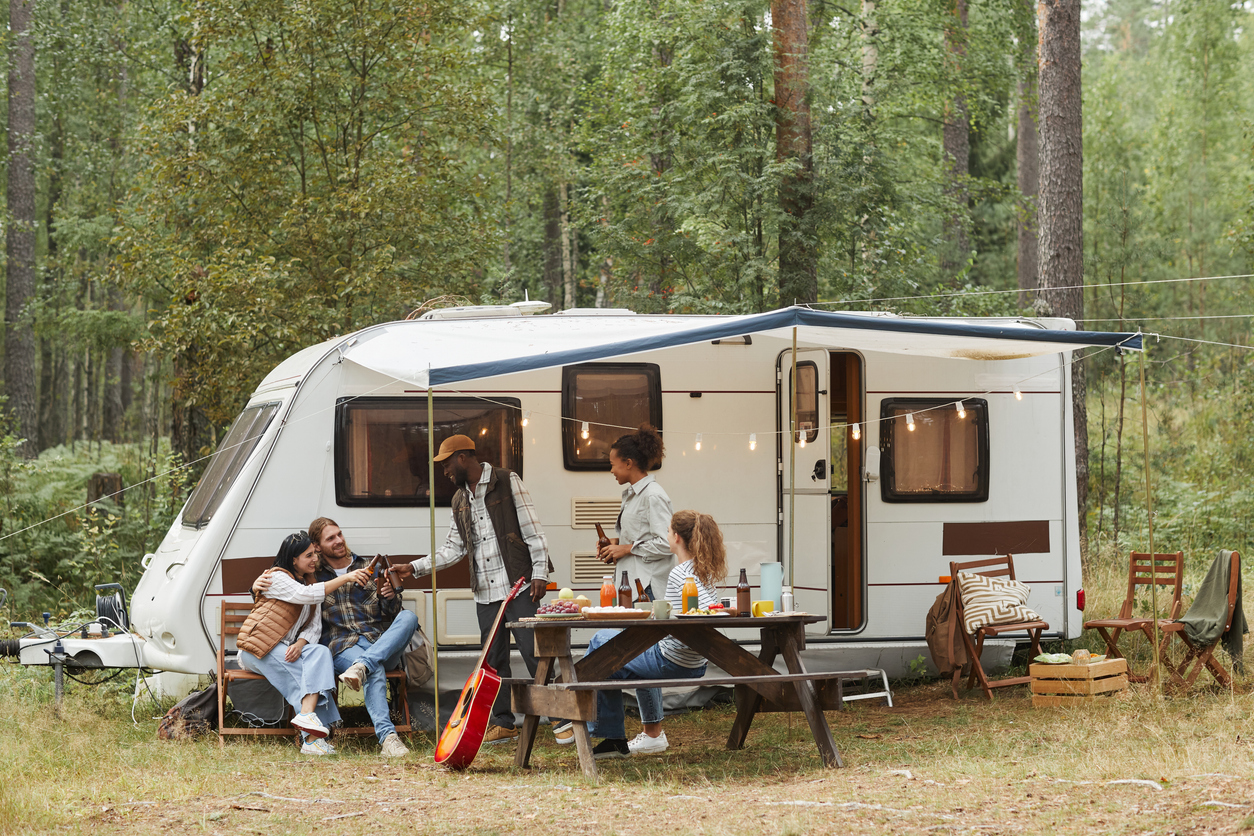How to prep your camper or RV for winter storage in 6 steps
Published September 1, 2025 by Angela Talbot | Reading Time: 4 minutes
-
Categories:
- Auto & Vehicle

When camping season winds down, properly storing your RV or camper becomes crucial for protecting your investment. Taking the right steps now can save you from costly repairs and headaches when spring arrives. This guide walks you through the essential winterization process to keep your recreational vehicle in top condition during the cold months.
Proper winter storage isn’t just about parking your RV and walking away. Cold temperatures, moisture, and pests can cause significant damage if you don’t prepare adequately. From preventing frozen pipes to protecting your battery, each step matters for maintaining your RV’s condition and value.
1. Clean and inspect your RV thoroughly
Start your winterization process with a comprehensive cleaning and inspection.
- Wash the exterior completely, removing dirt, grime, and any organic matter that could attract pests or cause staining during storage.
- Pay special attention to the roof, checking for any damage or wear that needs repair before winter sets in.
- Inside your RV, remove all food items, including canned goods and dry items that might attract rodents.
- Clean all surfaces, appliances, and storage areas thoroughly.
- Don’t forget to empty and clean the refrigerator, leaving the doors propped open to prevent mold and mildew growth.
- Check all seals around windows, doors, and vents for cracks or gaps.
- Replace any damaged weather stripping now, as proper sealing prevents moisture intrusion and heat loss during storage.
2. Drain all water systems completely
Water damage represents one of the biggest threats to stored RVs. Begin by draining your fresh water tank, hot water heater, and all supply lines. Turn on all faucets, including the shower, and flush the toilet to remove as much water as possible from the system.
Consider using RV antifreeze to protect your plumbing system. Pour the antifreeze into drains and the toilet to prevent any remaining water from freezing and cracking pipes. This step provides crucial protection in areas where temperatures drop below freezing.
Don’t forget about your gray and black water tanks. Empty and flush these thoroughly, then add a small amount of RV antifreeze to prevent any residual water from causing damage.
3. Protect tires and exterior components
Your RV’s tires need special attention during extended storage. Check tire pressure and inflate to the manufacturer’s recommended levels, as cold weather naturally reduces pressure. Consider placing your RV on jack stands or tire blocks to reduce flat spots and tire degradation.
Cover your tires with UV-resistant tire covers to protect them from sun damage and cracking. If you’re storing outdoors, this protection becomes even more important.
Inspect and lubricate all exterior moving parts, including jacks, hinges, and slide-out mechanisms. Apply appropriate lubricants to prevent corrosion and ensure smooth operation when you’re ready to use your RV again.
4. Maintain your battery properly
Battery care significantly impacts your RV’s readiness for the next camping season. Remove the battery if possible and store it in a cool, dry location above freezing temperature. Clean the terminals with a wire brush and apply terminal protector spray to prevent corrosion.
If you cannot remove the battery, disconnect the negative terminal at minimum to prevent slow discharge from phantom loads. Consider using a battery maintainer or trickle charger designed for RV batteries to keep the charge level optimal throughout storage.
Check battery fluid levels if you have conventional batteries, and top off with distilled water as needed. Sealed batteries require less maintenance but still benefit from proper charging maintenance.
5. Secure the interior space
Protect your RV’s interior by removing or securing all loose items that could shift and cause damage. Close all blinds and curtains to protect upholstery and interior surfaces from UV damage if storing in a sunny location.
Place moisture absorbers throughout the interior to combat humidity and prevent mold growth. Cedar blocks or mothballs can help deter insects and rodents, but ensure proper ventilation when using these products.
Leave cabinet doors and drawers slightly open to promote air circulation and prevent musty odors from developing during the storage period.
6. Cover and store your RV safely
A quality RV cover provides the best protection for outdoor storage. Choose a breathable cover that fits properly and won’t flap in the wind. Secure the cover according to manufacturer instructions to prevent damage to both the cover and your RV.
If indoor storage isn’t available, choose your outdoor storage location carefully. Look for level ground with good drainage, away from overhanging tree branches that could fall during storms.
Check on your stored RV periodically throughout winter, especially after severe weather events. Look for any signs of damage, pest intrusion, or cover displacement that needs immediate attention.
Ready for next season
Proper winter storage preparation protects your RV investment and ensures you’ll be ready to hit the road when warmer weather returns. Taking time now to complete these essential steps prevents costly repairs and extends your RV’s lifespan.
Remember that storage requirements can vary based on your local climate and storage conditions. When in doubt, consult your RV’s owner manual or speak with a qualified RV service technician for specific guidance about your particular model and situation.
Having RV insurance is also a critical component of winter preparation, as it provides protection in case of unforeseen accidents or damage during storage. For comprehensive coverage tailored to your needs, consider our trusted partner, WebFirst Insurance. Get a quote today and ensure peace of mind all year round.
